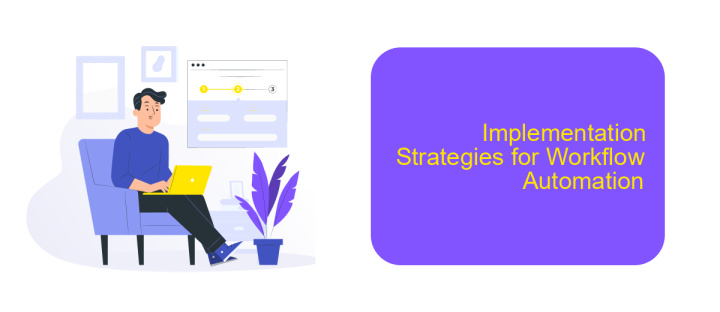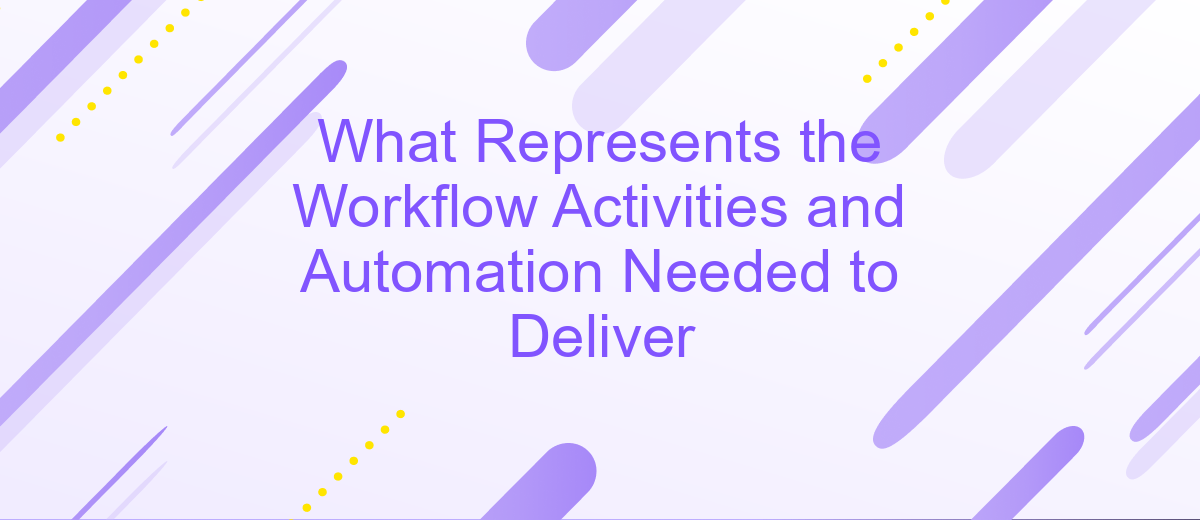What Represents the Workflow Activities and Automation Needed to Deliver
In today's fast-paced digital landscape, efficient workflow activities and automation are crucial for delivering high-quality products and services. This article explores the key components and strategies that represent these essential processes, highlighting how businesses can streamline operations, enhance productivity, and maintain competitive advantage. By understanding and implementing effective workflow automation, organizations can achieve seamless integration and improved outcomes in their delivery pipelines.
Introduction
In today's rapidly evolving business landscape, effective workflow management and automation are crucial for ensuring efficiency and productivity. Understanding the activities involved in workflow processes and the automation tools required to deliver them can significantly enhance operational performance. This article delves into the essential components of workflow activities and the role of automation in streamlining these processes.
- Identifying key workflow activities
- Implementing automation tools
- Integrating systems and services
- Monitoring and optimizing workflows
One such automation tool that stands out is ApiX-Drive, a service designed to facilitate seamless integrations and automate routine tasks. By leveraging ApiX-Drive, businesses can connect various applications and services, thereby reducing manual effort and minimizing errors. This not only improves efficiency but also allows teams to focus on more strategic initiatives. In the following sections, we will explore these components in detail and provide insights on how to implement effective workflow automation strategies.
Understanding Workflow Activities and Automation

Understanding workflow activities involves identifying the tasks and processes required to achieve specific business objectives. These activities can range from simple, manual tasks to complex, automated processes. By mapping out each step, businesses can better visualize the sequence of actions needed, identify potential bottlenecks, and streamline operations. Automation plays a crucial role in enhancing efficiency, reducing human error, and ensuring consistency in repetitive tasks.
To effectively implement automation, businesses often rely on integration services like ApiX-Drive. This platform allows seamless connection between various applications and systems, enabling data to flow effortlessly across different tools. With ApiX-Drive, businesses can automate routine tasks, such as data entry and report generation, thereby freeing up valuable time for more strategic activities. Understanding and leveraging these workflow activities and automation tools can significantly enhance productivity and operational efficiency.
Benefits and Applications of Automating Workflow Activities

Automating workflow activities offers numerous benefits and practical applications for businesses of all sizes. By streamlining repetitive tasks and reducing manual intervention, companies can achieve higher efficiency and accuracy in their operations. This not only saves time but also minimizes the risk of human error, leading to improved overall productivity.
- Increased Efficiency: Automation tools can handle multiple tasks simultaneously, significantly speeding up processes.
- Cost Savings: Reducing the need for manual labor lowers operational costs.
- Consistency and Accuracy: Automated systems ensure that tasks are performed consistently and accurately every time.
- Enhanced Scalability: As businesses grow, automated workflows can easily scale to accommodate increased workloads.
- Better Resource Allocation: Employees can focus on more strategic tasks, improving overall job satisfaction and productivity.
One practical application of automating workflow activities is through integration services like ApiX-Drive. This platform allows businesses to connect various applications and automate data transfers seamlessly. By leveraging such tools, companies can eliminate the need for manual data entry, ensuring that information flows smoothly between systems, thereby enhancing operational efficiency and data accuracy.
Implementation Strategies for Workflow Automation

Implementing workflow automation requires a well-structured strategy to ensure seamless integration and efficiency. The first step involves identifying repetitive tasks that can be automated to save time and reduce human error. Analyzing current workflows to pinpoint bottlenecks and inefficiencies is crucial for developing a tailored automation plan.
Next, selecting the right tools and platforms is essential for successful automation. ApiX-Drive offers a comprehensive solution for integrating various applications and services, streamlining data transfer and task automation. Its user-friendly interface allows for easy setup and management, making it an ideal choice for businesses looking to enhance their workflow automation.
- Identify repetitive tasks and inefficiencies
- Select appropriate automation tools and platforms
- Utilize ApiX-Drive for seamless integration
- Monitor and optimize automated workflows regularly
Finally, continuous monitoring and optimization of automated workflows are necessary to ensure they remain effective and adapt to changing business needs. By regularly reviewing performance and making necessary adjustments, businesses can maximize the benefits of workflow automation, leading to improved productivity and efficiency.
Challenges and Considerations in Workflow Automation
Implementing workflow automation presents several challenges that organizations must carefully consider. One primary challenge is the integration of various systems and tools. Ensuring seamless communication between different software solutions can be complex and time-consuming. Tools like ApiX-Drive can significantly simplify this process by providing a user-friendly platform for integrating multiple applications without the need for extensive coding knowledge. Additionally, maintaining data security and compliance during automation is critical, as automated workflows often handle sensitive information.
Another significant consideration is the adaptability of automated workflows. Business processes are dynamic and may require frequent adjustments, making it essential for automation solutions to be flexible and easily modifiable. Organizations should also invest in employee training to ensure that staff can effectively manage and troubleshoot automated systems. Moreover, the initial cost and time investment in setting up workflow automation can be substantial, necessitating a thorough cost-benefit analysis to justify the expenditure. Ultimately, while workflow automation can drive efficiency, it requires careful planning and ongoing management to be truly effective.
FAQ
What is workflow automation and why is it important?
How can I identify which activities in my workflow can be automated?
What steps are involved in automating a workflow?
What are some common challenges in workflow automation?
How can I integrate different software applications to streamline my workflow?
Apix-Drive is a simple and efficient system connector that will help you automate routine tasks and optimize business processes. You can save time and money, direct these resources to more important purposes. Test ApiX-Drive and make sure that this tool will relieve your employees and after 5 minutes of settings your business will start working faster.

